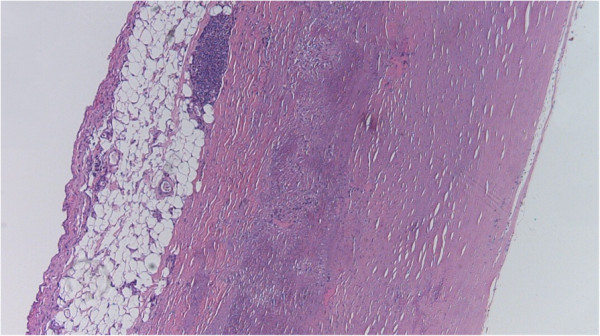Playlist
Show Playlist
Hide Playlist
Vascular Pathologies and Abdominal Aortic Aneurysms
-
Slides Plaque Morphology and Complications.pdf
-
Download Lecture Overview
00:02 Okay, so, to recapitulate once again, atherosclerosis is a stereotype vascular response to injury. 00:14 And that's what's shown on the left hand side, it's got the traditional risk factors, hypertension, hypercholesterolemia, diabetes, smoking, genetics. 00:22 It's a cause of death in roughly a quarter of the US population. 00:26 Okay, that's atherosclerosis, but intimal proliferation, such you see an atherosclerosis, that accumulation of smooth muscle cells in matrix is also part and parcel of every injury to an artery. 00:41 And there are other forms of injury to arteries. 00:43 So keep that in mind when you're dealing with your patients. 00:46 So in transplanted hearts or transplanted any organ, there is going to be an ongoing immune response. 00:57 That will cause progressive intimal stenosis due to smooth muscle cell proliferation, and elaboration of extracellular matrix that becomes significant limiting in terms of flow in 50% of patients within five years. 01:12 So that's graphed arterial disease, again, injury of a different form immune mediated injury, as opposed to something driven by the inflammation that goes on with hypercholesterolemia, or endothelial cell dysfunction. 01:27 And when we do stents, so this is a stented vessel. 01:31 The areas that are highlighted in the box with the kind of a clearing, represent where the stent struts were, that caused local trauma. 01:40 There was also local thrombosis combination of the trauma and thrombosis is injury to the endothelium. 01:46 And the same stereotype responses to vascular injury are at play here. 01:52 So we get a concentric intimal hyperplasia, and 20 to 30% of stents because of this healing process within the intima, will stenose every year. 02:04 So vessels are kind of one trick pony, is they can only respond a certain way when they get injured and they get injured in different ways you see on this slide. 02:14 Their only response is to have intimal proliferation. 02:18 With more smooth muscle cell recruitment, and more matrix production. 02:25 Let's delve into one other aspect of atherosclerosis. 02:29 So aneurysm formation, due to the production of proteases by the recruited inflammatory cells. 02:38 This is a big deal. 02:38 So we're looking on the right hand side and an aorta. 02:41 The branches on either side we are going to the, are the renal arteries now in the infrarenal location just above the iliac bifurcation. 02:50 There's a big globular swelling that represents a weakening a thing of the wall and an out-pouching of this aorta. 03:01 At that size, it has a significant risk of rupture. 03:05 So there's 3% prevalence in the elderly population, that is to say over 80 years old 3% of that population, which is pretty significant, will have abdominal, aortic aneurysm or a triple A. 03:20 15,000 deaths per year occur in the world as a result of rupture. 03:25 And it's, again, this aneurism, as for me as a result of chronic inflammation, loss of elastic tissue, and increased matrix turnover due to the inflammatory cell recruitment into these because of the underlying atherosclerosis. 03:40 And predominantly, there are certain cytokines, T-helper cytokine, type two, interleukin-4, interleukin-13, that are driving this process. 03:50 So, think about this, we can start with a vessel in the little blue dots on this vessel are inflammatory cells. 03:58 And if they produce predominantly interferon gamma, TH1 type cytokines, we get intimal proliferation, and that could be driving, that could be atherosclerosis, it could be transplant arteriopathy, it could be stent restenosis. 04:14 On the other hand, if the recruited inflammatory cells make more TH2 cytokines like interleukin-4, we get the activation of macrophages to make proteases that will create an aneurysm. 04:28 So kind of two way path depending on how things get activated. 04:33 With that we've looked at different forms of plaque and different responses to different stimulation, giving us the pathologies that can happen with atherosclerosis.
About the Lecture
The lecture Vascular Pathologies and Abdominal Aortic Aneurysms by Richard Mitchell, MD, PhD is from the course Atherosclerosis.
Included Quiz Questions
What percentage of stents show restenosis each year?
- 20%–30%
- 40%–50%
- 60%–75%
- 5%–10%
- 80%–90%
Abdominal aortic aneurysm (AAA) is caused by an increase in what cytokine?
- Interleukin-4
- Interferon-g
- Interferon type 1
- Interleukin-6
- Interleukin-2
Customer reviews
5,0 of 5 stars
| 5 Stars |
|
5 |
| 4 Stars |
|
0 |
| 3 Stars |
|
0 |
| 2 Stars |
|
0 |
| 1 Star |
|
0 |




